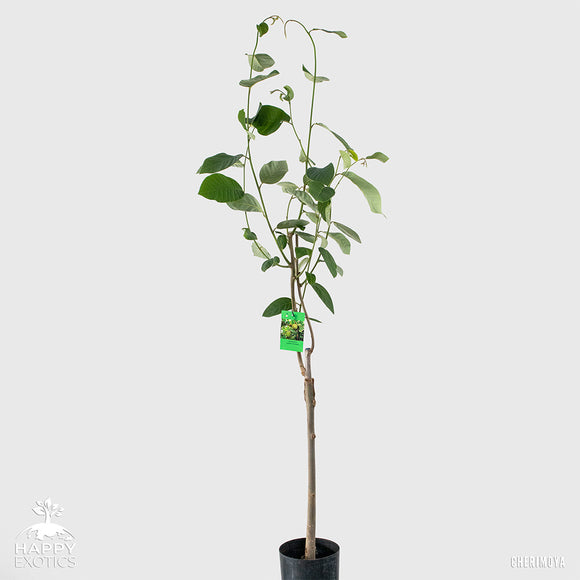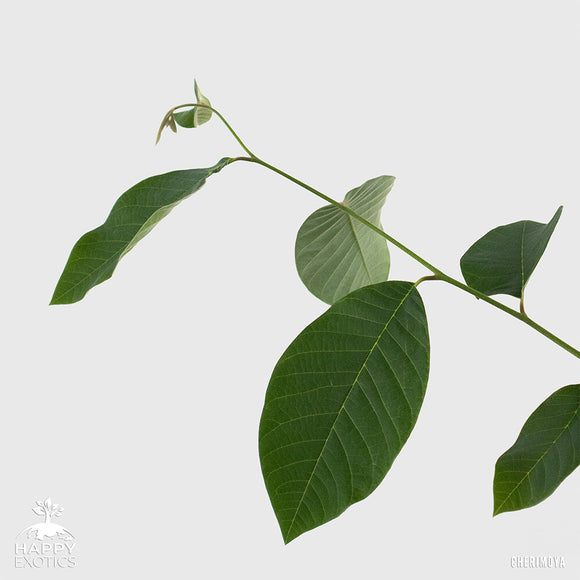The Cherimoya Tree
The cherimoya tree, scientifically known as Annona cherimola, is a tropical fruit tree native to the Andean highlands of South America. It belongs to the Annonaceae family, which includes other delicious fruits like soursop and custard apple. Cherimoya trees are now cultivated in various regions worldwide with suitable climates.In Europe the the fruit's popularity and demand have led to successful cultivation attempts in select European areas with suitable climates. Southern regions of Spain, particularly the coastal areas of Andalusia has a favorable climate for cherimoya cultivation. Other Mediterranean countries such as Italy, Greece, and Portugal also have some cherimoya cultivation, albeit on a smaller scale. The cherimoya tree is a small to medium-sized evergreen tree that can reach heights of 6 to 9 meters. When cultivated, the trees are pruned back to a desired height of around 2 meters. It has a pyramid-like shape with a rounded crown and a relatively short trunk. The leaves are large, oval-shaped, glossy, and deep green in color, providing a lush appearance to the tree. One of the most distinctive features of the cherimoya tree is its flowers. They are peculiar, fragrant, and unique, with three fleshy outer petals that are greenish-yellow or brownish, and three smaller, more narrow inner petals that are pale yellow or green. The flowers are pollinated by beetles, bees, or flies and develop into the delicious fruit for which the tree is known. Cultivating cherimoya trees can be a rewarding experience, as they offer both ornamental beauty with their lush foliage and striking flowers, as well as delicious fruits with a unique taste. The tree's tropical origins and delightful fruit make it a favorite among fruit enthusiasts and gardeners seeking to add exotic flavors to their home orchards.
Cherimoya fruit - Fino de Jete
This is a grafted Cherimoya tree in a 6 liter pot, including pot circa 120cm high. The rootstock is a Cherimoya seedling, with a Fino de Jete cultivar grafted. The Fino de Jete is a specific cultivar of cherimoya (Annona cherimola) known for its exceptional flavor and quality. It is named after the village of Jete in the province of Granada, Spain, where it originated and is primarily cultivated. The Fino de Jete cultivar is highly regarded among cherimoya enthusiasts for its superior taste and unique characteristics. The Fino de Jete cherimoya has several distinct features that set it apart from other cultivars. The fruit is generally medium to large in size and has a heart-shaped or rounded shape. Its skin is green and covered with small, cone-shaped protuberances or bumps. The surface may also exhibit slight cracks or fissures as the fruit ripens. What truly makes the Fino de Jete cherimoya standout is its exceptional flavor. The flesh of this cultivar is incredibly creamy, smooth, and custard-like. It has a delicate, sweet taste with subtle hints of tropical flavors such as pineapple, banana, and strawberry. Many consider it to be one of the best-tasting cherimoya varieties available.


